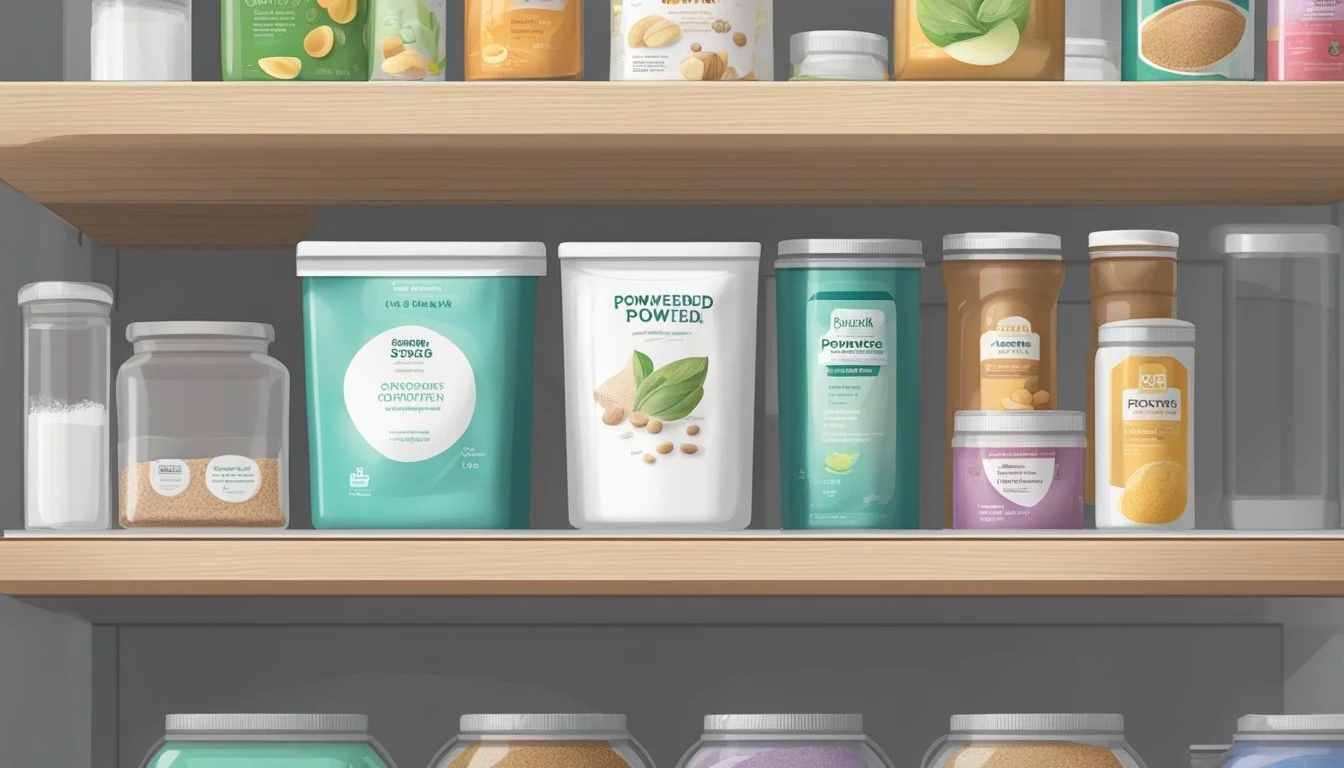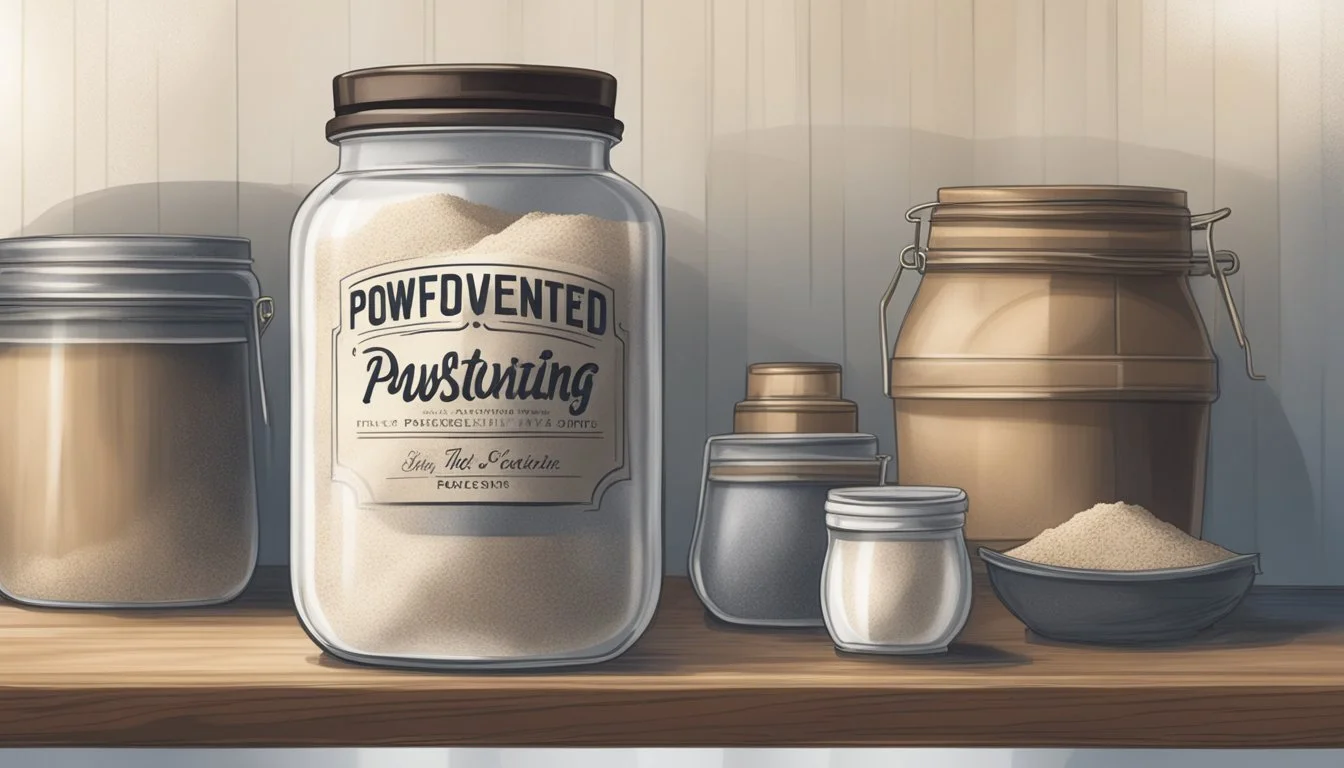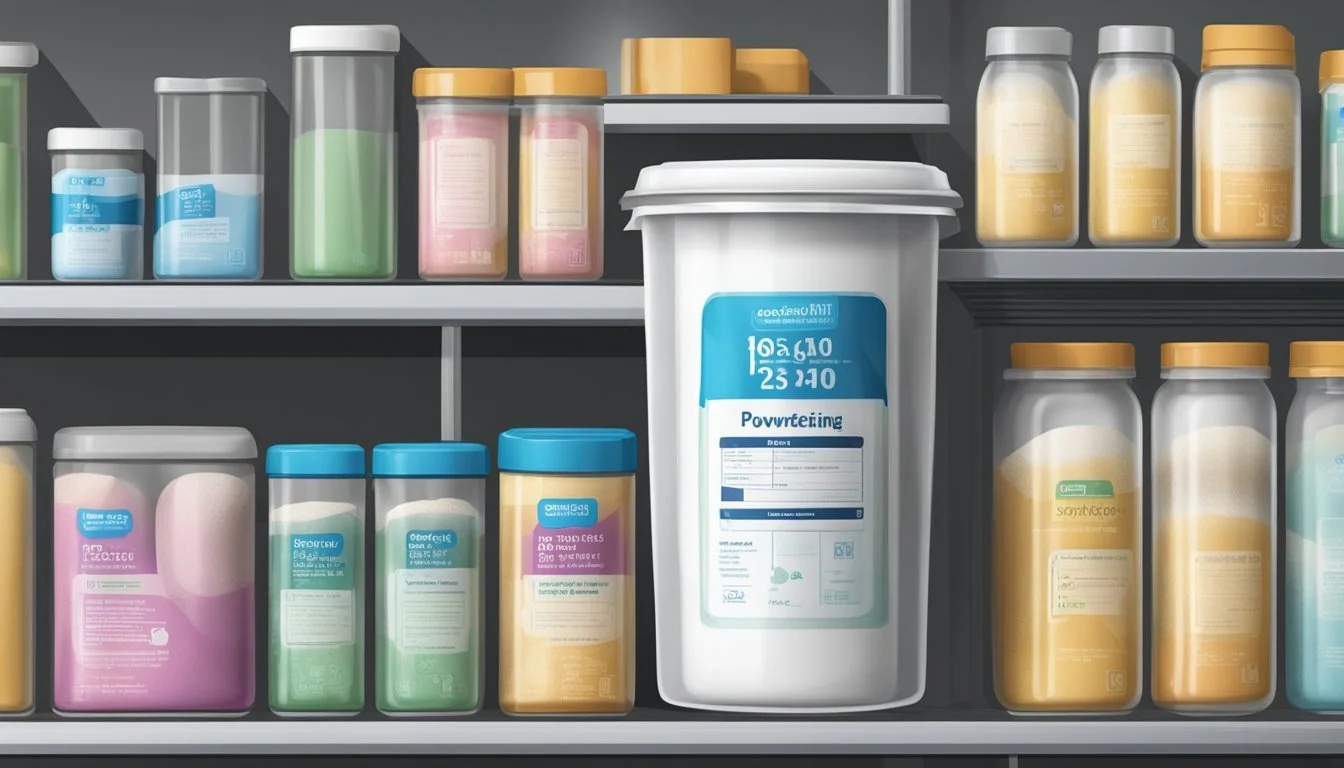How Long Does Powdered Shortening Last?
Shelf Life Explained
When it comes to the shelf life of powdered shortening, it is essential to distinguish between unopened and opened packages. As a staple in many pantries, powdered shortening provides an alternative to traditional solid shortening, boasting a longer shelf life due to its reduced moisture content and the nature of its processing. Typical shelf life for an unopened package of powdered shortening can range extensively, influenced heavily by the storage environment – a cool, dry place is ideal to maximize longevity.
Once opened, the shelf life of powdered shortening is dependent on proper storage and handling to maintain its quality. Exposure to air, light, and heat can accelerate the degradation process, potentially leading to rancidity. To ensure the best quality, storage in an airtight container can help preserve powdered shortening's characteristics for an extended period, although the specific duration may vary by manufacturer and product composition. Regularly checking for any changes in odor, color, or texture can serve as reliable indicators for determining if the powdered shortening remains suitable for use.
Understanding Shortening
Shortening is a staple in both commercial and home baking, providing a desired texture and stability to a variety of recipes. It plays a crucial role in the texture and shelf life of many baked goods.
Composition and Types
Shortening is essentially fat that remains solid at room temperature. It traditionally emanated from animal fats, but vegetable shortening has become prevalent. This category predominantly includes fats derived from plants such as soybean and palm oils. Types of shortening include the classic, all-purpose hydrogenated vegetable oil, as well as more specific variations like organic, and margarine, which often contains both vegetable oils and sometimes animal fats.
Vegetable Shortening: Made primarily from vegetable oils such as soybean or palm.
Animal Fats: Includes lard and suet, which are less common in modern baking but still used for certain recipes.
Margarine: Often used as a substitute for butter, it's made from a mix of vegetable oils and contains emulsifiers.
Organic Shortening: Having no chemicals or artificial substances in its production, organic shortening is sought after for its perceived health benefits.
Shelf Life Factors
The shelf life of shortening depends on various factors:
Storage Conditions: To prolong shelf life, shortening should be stored in a cool, dark place, away from direct heat sources.
Type of Shortening: Solid shortenings typically last longer than oil-based ones.
Exposure to Air: Exposure to air can speed up the oxidation process, leading to spoilage.
Temperature is a significant factor that affects the quality and shelf life of shortening. Consistent storage at room temperature, typically between 68°F to 72°F (20°C to 22°C), is ideal. Furthermore, unopened shortening can generally last up to two years past its expiration date when stored properly. However, once opened, it is advisable to use shortening within three months for the best quality.
Identifying Spoilage
When powdered shortening goes bad, it exhibits certain indicators that are crucial for a consumer to recognize in order to maintain food safety and quality.
Signs of Rancidity
The first signs of spoilage in powdered shortening are sensory changes. These can be detected by:
Smell: A rancid odor is the most straightforward indicator that powdered shortening has spoiled. This off-putting smell is due to the oxidation of fats.
Color Change: The shortening may develop a yellowish tint, indicating it's no longer suitable for consumption.
Texture: Although less common in powdered forms, any deviation from the original texture can be a sign of spoilage.
Flavor: An unusual or off-flavor is an indication that the shortening should not be used.
Health Risks Associated
Consuming spoiled shortening poses potential health risks:
Food Poisoning: Spoiled shortening can harbor bacteria that lead to food poisoning.
Mold Growth: Although not as common in powdered products, the presence of mold signifies a serious level of spoilage and should not be consumed under any circumstances.
It's imperative that individuals trust their senses and inspect their powdered shortening regularly to ensure it has not gone bad.
Proper Storage Techniques
Proper storage is essential in maintaining the quality and extending the shelf life of powdered shortening. Consistency in the storage environment prevents spoilage and ensures the product remains in a usable condition for as long as possible.
Optimal Storage Conditions
Powdered shortening thrives in cool, dry areas with a stable temperature, ideally between 50°F and 70°F (10°C and 21°C). These conditions are typically found in a pantry or a cupboard away from appliances that generate heat. It's important to store powdered shortening in an airtight container to protect it from moisture and oxygen which can hasten spoilage.
Temperature: Keep at 50°F - 70°F (10°C - 21°C)
Location: Pantry or cool cupboard
Container: Airtight
Preventing Spoilage
To prevent spoilage, one should avoid exposure to air, water, and light, particularly direct sunlight. Therefore, powdered shortening should not be stored near a window or in areas prone to humidity, such as under the sink. Refrigerators can be used for extended storage, but it is generally not necessary unless the ambient temperature cannot be maintained within the recommended range.
Avoid:
Direct sunlight
Exposure to air
Contact with water
Optional:
Refrigerate if ambient temperature is too high
Utilizing Shortening in Cooking
In cooking, shortening is prized for its ability to give end products a desirable texture. It remains solid at room temperature, which makes it a staple for creating flaky pie crusts and tender baked goods.
Frying and Baking
Frying: When heated for frying, shortening melts and becomes an excellent medium for cooking, known for its high smoking point. This makes it well-suited for high-heat applications. In applications like frying chicken, shortening contributes to a crispy, golden exterior while keeping the interior moist.
Baking: In baking, shortening is key to achieving an airy and flaky texture, particularly in pie crusts and pastries. Because it is solid at room temperature, it can be cut into flour before baking, creating small pockets of fat that steam during the baking process. This results in baked goods that have a lighter texture.
For example:
Pie Crust: The use of shortening in pie crust recipes can lead to a flakier and more tender crust than those made with butter.
Cookies and Cakes: Shortening can contribute to a softer texture in cookies and a more stable structure in cakes.
Substituting Fats
Shortening can also be a substitute for other fats like butter or lard in recipes. However, substituting shortening may result in texture changes in the end product due to differences in fat composition.
Substitution Ratios: Often, shortening can be substituted on a 1:1 basis with butter or lard, but adjustments in moisture may be needed since shortening contains less water.
Texture Changes: When substituting shortening for other fats, it's important to consider the change in texture. Shortening results in an airy, less dense texture, which can affect the structure and mouthfeel of baked goods.
Fat to Be Substituted Shortening Required Considerations for Texture Butter Equal amount Shortening provides a less buttery flavor and may produce a drier texture due to lack of moisture in shortening Lard Equal amount Shortening is vegetarian-friendly and can create a lighter, less dense result compared with lard
Maximizing Shortening Shelf Life
When it comes to maximizing the shelf life of powdered shortening, proper storage and vigilant scrutiny before use are paramount. Both unopened and opened products demand careful management to ensure freshness for an extended period.
Assessment Before Use
One should start with a thorough check of the powdered shortening before each use. This includes examining the expiration date or best-by dates and ensuring the lid is securely closed after each use to prevent exposure to contaminants.
Unopened Packages:
Check the integrity of the packaging for signs of damage.
Verify best-by dates to ensure the product is within its optimal consumption period.
Opened Packages:
Inspect the shortening for signs of spoilage, such as a rancid odor or discoloration.
Confirm that the lid has been kept tightly sealed.
It's vital to assess that the powdered shortening still appears fresh and retains its solid form without any off-putting smells or textures.
Extending Usability
To extend the usability of powdered shortening—whether unopened or opened—it should be stored away from heat sources and light which can accelerate degradation.
Storage Environment:
Maintain a cool, dry area with temperatures between 50-70°F (10-21°C).
Avoid fluctuations in temperature, which can affect the shortening's structure.
Preservation Methods:
Use preservatives if recommended by the manufacturer to keep the shortening fresh for an extended period.
For opened packets, consider transferring the product to an airtight container to minimize exposure to air and moisture.
By taking these precautions, the shelf life of powdered shortening can be extended effectively.
Consumer FAQs
When considering the longevity and proper storage of powdered shortening, consumers frequently have questions related to its refrigeration and how to manage the product when it's in its dry state. The following subsections aim to address common concerns.
Refrigeration Queries
Is it necessary to refrigerate powdered shortening? Generally, powdered shortening does not require refrigeration. It should be stored in a cool, dry place away from direct sunlight and heat sources. Refrigeration can extend its shelf life, but it's not a mandatory step.
Can bacteria grow in powdered shortening if not refrigerated? Bacteria typically need moisture to thrive, so the dry nature of powdered shortening makes it inhospitable to bacterial growth.
Handling Dry Shortening
How should powdered shortening be measured for consistent results? For accurate measurement, spoon the powdered shortening into the measuring cup and level it off with a straight edge. Do not compact it.
Are there any visible signs that powdered shortening has spoiled? One should look for color changes or an off smell as indicators of spoilage.
Does freezing affect powdered shortening? Freezing powdered shortening is not recommended as it can cause condensation when thawing, potentially introducing moisture to the dry ingredients.
What are the best practices for storing powdered shortening to prevent spoilage? It is advised to keep powdered shortening in an airtight container to prevent the incorporation of odors or moisture from the environment.








